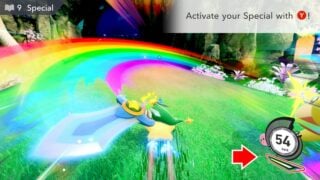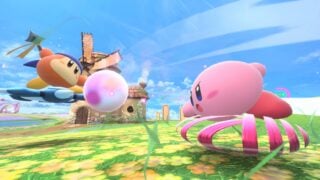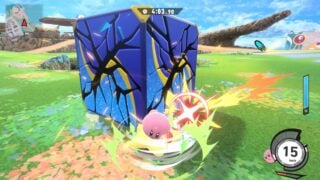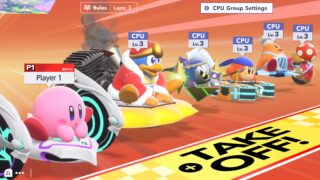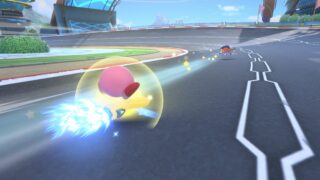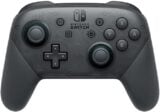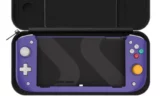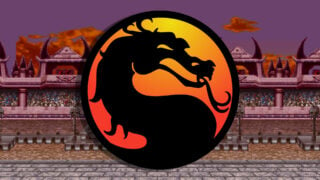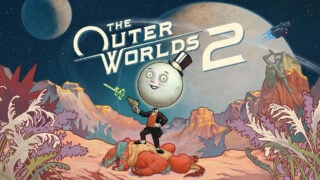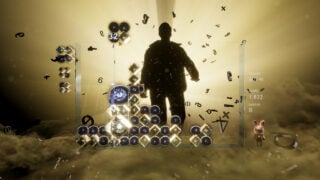Kirby Air Riders review: Masahiro Sakurai’s deceptively simple racer is a pleasant Switch 2 surprise
It’s not the Nintendo GameCube revival we would’ve chosen, but Air Riders is a great little racing game with engaging modes
- Director
- Masahiro Sakurai
- Key Credits
- Shinya Saito (Producer), Makoto Okazaki (Producer)
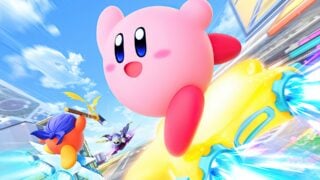
We’ll maybe never know why Nintendo let Masahiro Sakurai take a total of 107 minutes across two Nintendo Direct specials to explain Nintendo Switch 2’s Kirby Air Riders.
It certainly wasn’t because the game is so complicated that it required such a lengthy breakdown. This is a racer that, at its core, is so easy to play that it doesn’t even have a button for acceleration – each vehicle automatically moves forward.
In reality, it’s probably because Masahiro Sakurai simply likes to talk about games. He gave fans similarly in-depth breakdowns for some Super Smash Bros Ultimate DLC characters, and his now-concluded YouTube channel broke down game development to a wonderfully granular level.
It’s this meticulous attention to detail that proves Sakurai knows what makes a video game fun to play, and Kirby Air Riders – comically long lecture or not – is thankfully a shining indication that the man who claimed he was in semi-retirement after Smash Bros Ultimate has very much still got what it takes to deliver.
Although Kirby Air Riders is the successor to a GameCube title, we’re hardly talking Metal Gear Solid levels of lore here, so there’s absolutely no need to be familiar with the first game. The game’s Road Trip mode – which serves as its single-player Story mode – has its own entirely new plot, so to all intents and purposes, it can be treated as an entirely separate entity.
It’s Road Trip that provides the most fun for solo players, and the mode I’ll likely continue to play for many weeks yet. It has you moving through a series of stages – each themed on a different location – taking on a series of challenges like standard Air Ride races, overhead Top Ride races, and other various mini-games like boss battles, drag races, target games, and the like.
As you win each of these challenges, you unlock money, vehicles, and stat boosts, with the aim being to eventually build your abilities up enough to defeat the final boss at the end of the last stage. The variety of challenges on offer here is fun enough, but it’s the replay value that will have players coming back, because there are multiple routes through Road Trip (similar to Out Run), and the game shows you clear checkmarks each time you start a new journey, to help ensure you can work towards hitting every possible route.
“There’s a very compelling draw there to complete Road Trip with everyone, a task which will likely see you going well into the 30-40 hour mark if you really feel the need to get every character’s little ‘mode cleared’ face on that screen.”
The fact that you also have to commit to one character over the course of a Road Trip playthrough, and that each one takes a couple of hours, and rewards you with a little icon of their face on the mode’s main menu means there’s a very compelling draw there to complete Road Trip with everyone, a task which will likely see you going well into the 30-40 hour mark if you really feel the need to get every character’s ‘mode cleared’ face on that screen.
City Trial, the mode that Nintendo has been pushing harder, is a bit more of an acquired taste. On paper, it’s a great idea – set on a floating island called Skyah, players ride around for a set number of minutes, collecting as many stat boosts as they can while also swapping vehicles, attacking opponents, and taking on the impromptu challenges (like races and boss fights) which sometimes appear on the map and provide large stat rewards.
Once the time runs up, you then head to the Stadium section of City Trial, where players are given a choice of four mini-games to compete in. At this point, everyone is split up into their mini-game of choice, and your final ranking is based on how well you do in your specific mini-game. This means that although City Trial supports up to 16 players, it’s often possible to have four separate winners.
It’s a rather odd and anticlimactic end to what’s an otherwise really enjoyable mode, and does make you wonder what the point is of doing the lengthier open-world stuff – other than having fun causing chaos, of course – when it all boils down to your performance in a short mini-game at the end. It’s hardly a deal-breaker, and Sakurai said he decided to make it that way to make sure players didn’t only have a 1 in 16 chance of winning, but it’s still a tad unusual.
What’s likely to be more widely agreed upon is that the decision to make every vehicle feel truly unique is a great one. This isn’t a Mario Kart situation where you have a bunch of different vehicles, but they all mostly feel the same to drive and are only differentiated by a bunch of numerical stats – the Air Ride Machines here all feel wildly different, with many boasting unique abilities.
The Wagon Star, for example, is a giant pink wagon which can’t perform boosts when you slide round corners but has otherwise brilliant stats, so it’s useful on circuits where multiple boost turns – which involve nearly coming to a complete stop before they charge – are more trouble than they’re worth.
“This isn’t a Mario Kart situation where you have a bunch of different vehicles but they all mostly feel the same to drive and are only differentiated by a bunch of numerical stats – the Air Ride Machines here all feel wildly different, with many boasting unique abilities.”
If the circuit is light on sharp corners, you might want to go for the F-Zero like Formula Star instead, which has a ridiculous top speed but can barely turn. Then there’s the Winged Star, which is slow on the ground but has fantastic gliding abilities, so you’ll want to use that on a circuit with lots of jumps on it. There are more than 20 vehicles, lending a fantastic sense of variety to proceedings.
The roster of playable characters is somewhat less diverse in terms of stats, but each has its own specific special move, which can also be a factor in choosing who to opt for in a particular event. Mousey villain Daroach has the Sneaky Dash move, for example, which has him stealing an opponent’s ability, then driving past while invisible, while Chef Kawasaki can drop plates of curry, which can have an adverse effect on other riders.
At the moment – at least in the few online races I’ve been able to take part in pre-release – it appears that Rick the hamster is perhaps overpowered when it comes to his special move, in which he ploughs forwards at ridiculous speed for a while. Enjoy him while he lasts, because I dare say Nintendo will already be looking to nerf him in a patch, following the recent limited-time Global Test Ride online demo, which saw countless races full of Ricks once players realised the power he’s packing.

All this combines for a game that appears almost insultingly simple at first – virtually any action except for the special attack is performed with a single button – but hides a hidden depth in its vehicle diversity and special moves, especially during the brilliant single-player Road Trip mode where the variety of challenges means you’ll be frequently swapping between different vehicles to give yourself the best chance of winning.
Then, as the final little cherry on top, the game has a massive Checklist section with 750 separate achievements – 150 each for the Air Ride, Top Ride, City Trial, Road Trip, and Online modes – which unlock a bunch of characters, vehicles, classic tracks, cosmetics, music, online title card stickers, and other goodies. Clearing all of this will take another hefty chunk of time.
As someone who had a reasonable enough time with the original Kirby Air Rider on the GameCube, I’d be lying if I said it was top of my list of classic Nintendo games that I wanted to see making a comeback (Punch-Out, Excite Truck and Kid Icarus, please if you’re reading this, Furukawa-san). But Kirby Air Riders is a pleasant surprise that may have some rather eccentric design choices at times – especially in its anticlimactic City Trial mode – but is a great little racing game with engaging and replay-friendly solo modes.
Kirby Air Riders review
Kirby Air Riders really didn't need a combined 107 minutes of Nintendo Direct presentations to sell players on its merits, because it only takes a few races to see how fun it can be. Road Trip mode's imbalanced win conditions will divide players, but the brilliantly diverse Road Trip (which is built with multiple playthroughs in mind) and the hefty 750-mission Checklist ensure solo players have plenty to do.
- Simple controls make it easy for players of all ages to get started
- Vehicles feel genuinely distinct to handle, adding a strategic element
- Road Trip will (fittingly) swallow your free time
- Checklist will take a long time to fully complete
- City Trial is fun but the final phase is anticlimactic
- Rick needs to be nerfed before he ruins online multiplayer

